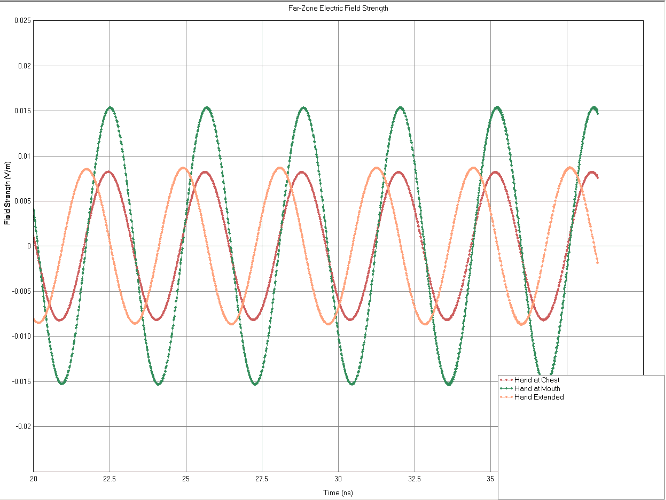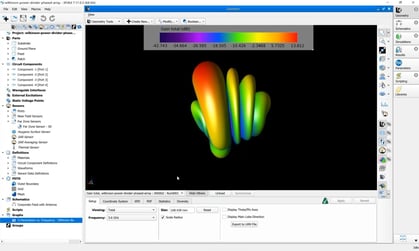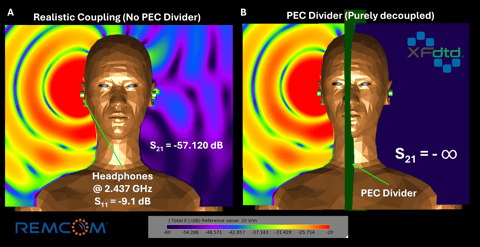Keyless Entry Demonstration Using XFdtd and VariPose
Most current automobiles are sold with a wireless device for remotely locking and unlocking the vehicle. On two episodes of NPR’s Car Talk (visit the Car Talk website and listen to “Never Underestimate the Power of the Chin” and “Remote Keyless Entry-A Professional Rebuttal”) it was stated that the range of the keyless function could be increased by holding the key to the chin rather than in the usual position in an outstretched hand. There was a discussion of why this could be true, but only anecdotal evidence was given. Until the introduction of VariPose, using FDTD to investigate this with a realistic body was not possible. In this example we show how VariPose and XFdtd can be used to illustrate the effect.
In the USA, most of these devices operate at 315 MHz and make use of a simple loop antenna for radiating. For these calculations the remote control device consists of a simple square wire loop antenna measuring 3x3cm. The loop is enclosed in a loss-less dielectric case which is colored orange for illustrative purposes. The loop is excited by a 315MHz sinusoidal source and the far-zone electric fields are saved using the transient far-zone option in XFdtd.
Three different key-arm positions are considered. In all cases, a 5mm mesh of the Visible Human is used and only the right arm position is altered using VariPose. In Figure 1, the hand is extended at waist level in what might be considered the default position. In Figure 2, the hand is positioned centered on the chest region with the arm closer to the body. Finally in Figure 3, the hand is positioned in front of the mouth. The final position with the hand by the mouth is the one described on Car Talk as providing the longest range. The body surface currents are also shown in each figure in false color.



Following the calculations the far-zone time-domain electric fields for all three cases are compared and plotted. As expected the “hand at mouth” position provides the strongest signal in the far field while the other positions have similar amplitudes which are about half of the hand at mouth case. A variety of other arm positions were also examined and none provided a higher amplitude signal than the hand at mouth case.
From observation of the surface currents in Figures 1-3 it is evident that the currents on the head, arm and chest region are much larger with the key held to the mouth region than with the key extended. These currents indicate reflections that produce the higher signal levels for this position shown in Figure 4.

Figure 4


